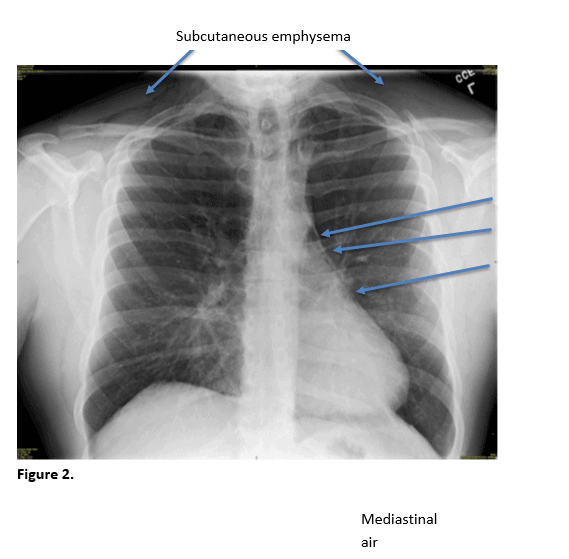Published on
Differential Diagnosis
- Rib fracture
- Pneumothorax
- Pulmonary contusion
- Subcutaneous emphysema
- Tracheobronchial laceration

Diagnosis
The patient was diagnosed with subcutaneous emphysema.
Learnings
- Subcutaneous emphysema occurs when air or gas is trapped in the subcutaneous layer of the skin
- Blunt or penetrating trauma is the most typical cause of subcutaneous emphysema
- Other potential precedents include ruptured esophagus, bronchial tube, or a malformed lung
- Common symptoms of subcutaneous emphysema include inflammation in the neck area, chest pain (as in this patient), neck pain, difficulty swallowing, wheezing, and breathlessness
Pearls for Urgent Care Management and Consideration for Transfer
- Streaky lucency in soft tissues at the base of the neck represents air in the subcutaneous tissues
- Clinically, spontaneous emphysema is felt as crepitus and, if extensive, may cause soft tissue swelling and discomfort
- Gas can arise from internal sources, external trauma, or gas-forming organisms. In this case, it arose from pneumomediastinum (also visible on this image)
A 35-Year-Old Man with Chest Pain
1 2
